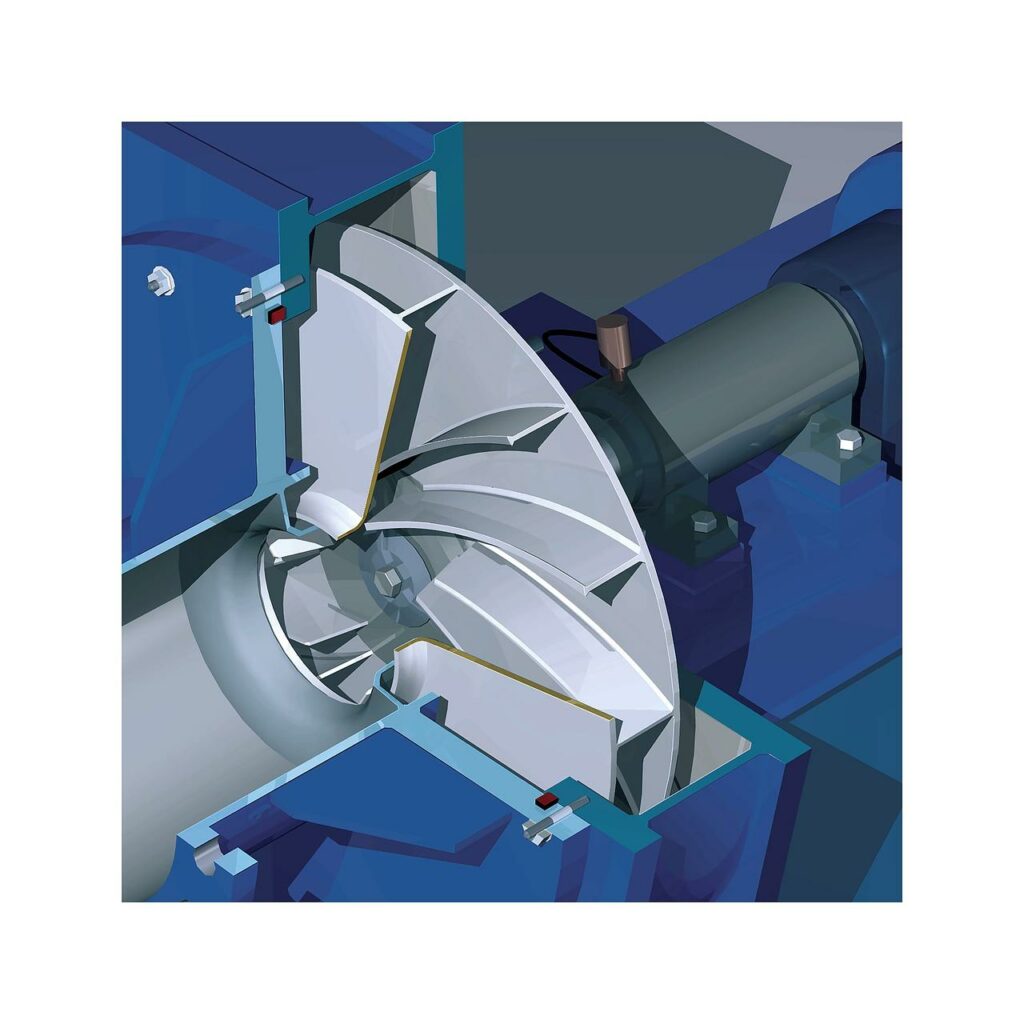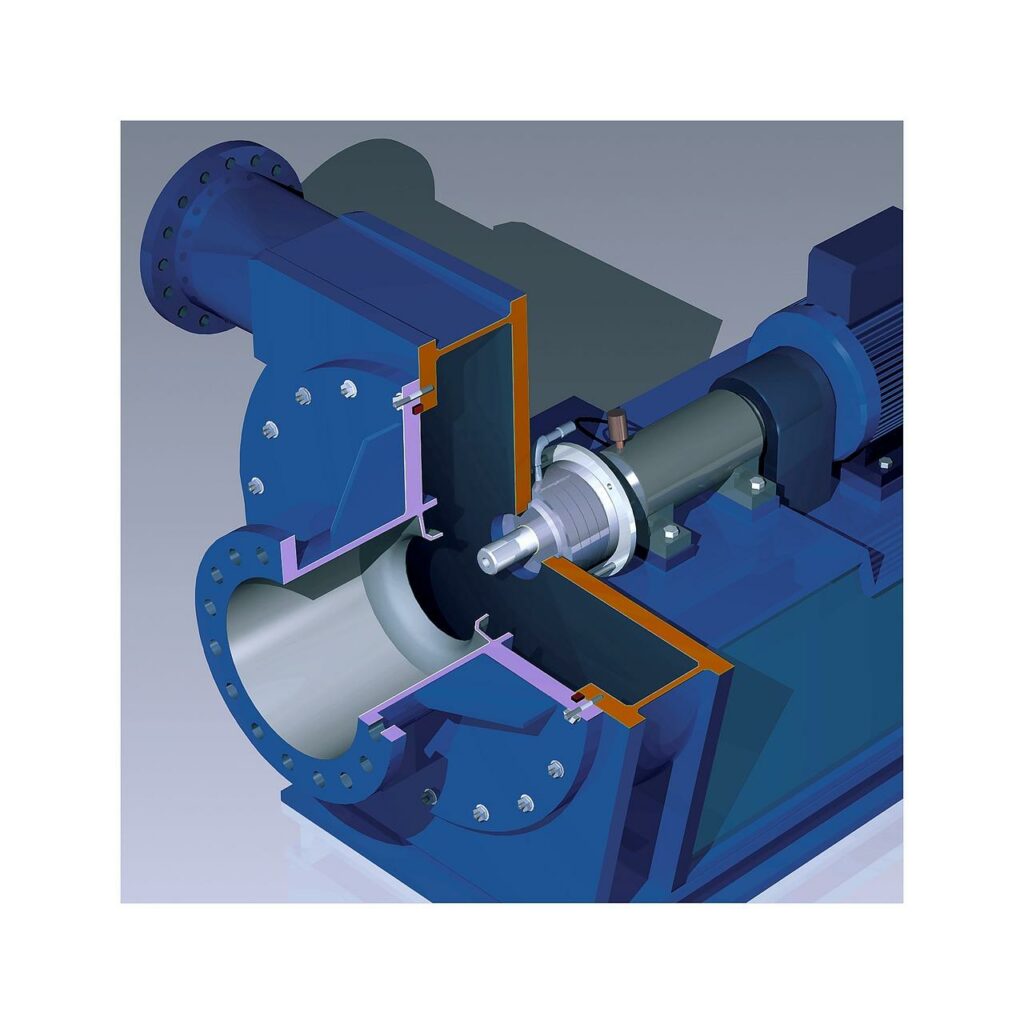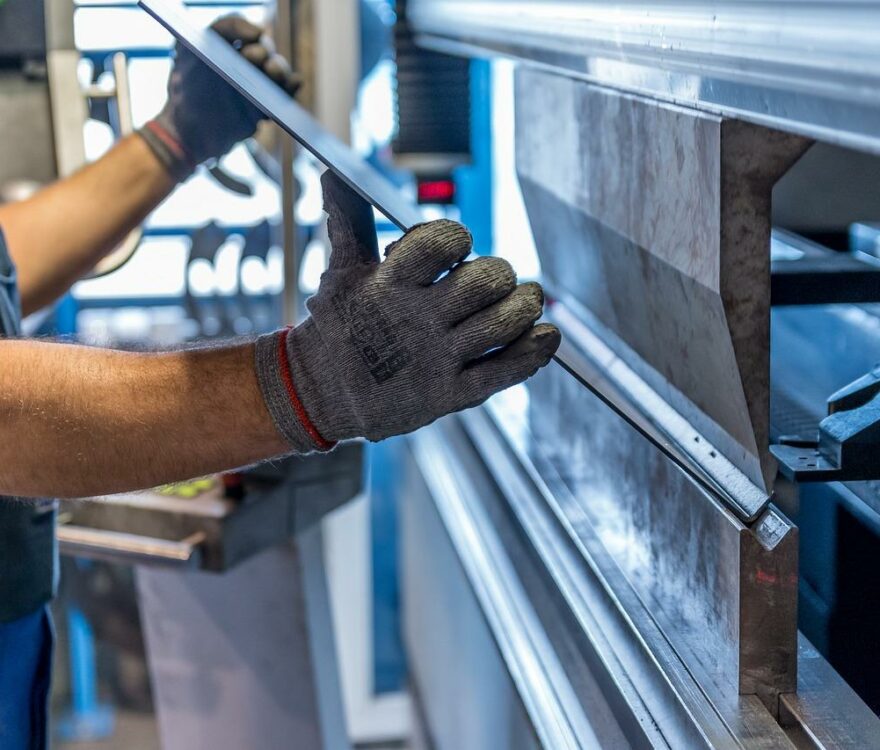Computer-aided design (CAD) and computer-aided manufacturing (CAM) are at the forefront of the technological change that is reshaping the landscape of traditional production. Businesses may leverage a new era of efficiency in design, production, and distribution by building digital models of components and products.
We will look at the revolutionary influence of digital manufacturing on industries and how it democratizes custom part manufacture, making it more cost-effective and accessible to organizations of all sizes.
This article delves into the area of digital manufacturing, looking at how it uses modern tools to create digital models, streamline operations, and uncover a world of possibilities.
What is Digital Manufacturing?
Digital manufacturing is the application of advanced software and computer systems to control and optimize the manufacturing process. It encompasses the development, production, and management of goods using digital technologies like 3D printing, computer-aided design (CAD), computer-aided manufacturing (CAM), computer numerical control (CNC), and robotics.
Digital manufacturing enables precision, flexibility, and high levels of personalization. It involves creating 3D models of products, simulating production processes, and optimizing industrial operations through sophisticated software tools. These tools manage machinery, monitor production efficiency, and conduct data analysis to improve output and uphold high standards.
Essentially, digital manufacturing is a manufacturing technique that aims to streamline and optimize the entire manufacturing process, from design to production and beyond.
History of Digital Manufacturing
Digital manufacturing dates back to the late twentieth century, with the introduction of the first computer-aided design (CAD) software. This ground-breaking program enabled engineers and designers to create 3D models of items and things, laying the groundwork for the manufacture of real counterparts.
The evolution of digital manufacturing has been nothing short of transformative, altering the design and manufacturing processes for a wide range of products and items. It has evolved into a highly sophisticated system throughout time.
In the present day, digital manufacturing has permeated nearly every industry, from aerospace and automotive to medical and consumer products. It stands as the linchpin of modern manufacturing, empowering companies to expedite the design and production of products with greater cost-effectiveness and precision. Moreover, it plays a pivotal role in minimizing waste and enhancing production yields, establishing itself as an indispensable tool for contemporary manufacturers.
Early Adopters of Digital Manufacturing
Early digital manufacturing adopters are forward-thinking businesses that embrace innovation, freely investing in cutting-edge technology to reap the benefits of increased efficiency and precision. These businesses are aggressively pursuing digital transformation, looking for novel methods to use new technology for process automation and optimization.
These trailblazing businesses have invested in digital manufacturing solutions such as computer-aided design (CAD) software, 3D printing technology, and robots, using these tools to create digital reproductions (twins) of their products and production lines.
Moreover, these forward-looking organizations leverage digital manufacturing to attain heightened visibility into their supply chain, effectively manage data across diverse systems, and promptly respond to evolving customer demands. Consequently, early adopters of digital manufacturing are reaping the dividends of heightened efficiency, reduced operational costs, and elevated customer satisfaction.
Types of Digital Manufacturing

The following are the main types of digital manufacturing:
- CAD Drafting and 3D Modeling
Gone are the days of manual drawing as computer-aided Drafting and 3D modeling services take the lead. CAD software, equipped with all the necessary tools, produces 2D and 3D models with unparalleled precision. Beyond heightened accuracy, CAD facilitates easy modifications, time savings, and enhanced visualization. It significantly minimizes the necessity for physical prototyping, cutting down the time from initial conceptualization to the final product.
Moreover, CAD enables the provision of data regarding various parts and materials, illustrating their behavior in specific situations. 3D printing, also referred to as additive manufacturing, is a digital manufacturing technology that employs a computer-controlled printer to construct three-dimensional objects based on a digital model. This innovative process involves adding materials layer by layer to produce the desired object.
- CNC Machining
CAD plays a pivotal role in the design phase, creating 3D models with precision and facilitating easy modifications. Its seamless integration into the production process allows for the generation of manufacturing code. CNC machines, or computer numerical control machines, then take charge of the production phase.
These machines, including water jets, lathes, and mills, interpret the generated code to move parts and tools across axes, adding or removing material. The final product mirrors its digital counterpart, and the wireless connectivity of CNC machines with CAD systems enhances communication between designers and floor operators.
- Manufacturing Analytics
Manufacturing Analytics is at the forefront of incorporating predictive analytics, big data, IoT, and mobile-first design into the manufacturing landscape. Its primary objective revolves around the collection and analysis of time series data generated by manufacturing companies. A standout feature is its ability to provide crucial insights into production time, machine utilization, and tool/material usage. This data serves as a valuable tool for pinpointing areas in need of improvement.
Moreover, Manufacturing Analytics offers a digital feedback option, enabling stakeholders to assess their processes in real time. This facilitates an informed decision-making process, ultimately elevating production quality. In essence, it empowers a deeper understanding of machine utilization and contributes to more accurate demand forecasts for products.
- Rapid Prototyping
Rapid prototyping stands as a digital manufacturing powerhouse, employing computer-controlled tools to swiftly and precisely craft a physical prototype of a design. Commonly embraced in product development and engineering, this process serves as a visual and testing aid for designers and engineers, allowing them to assess and refine their ideas before embarking on full-scale production.
- Laser Cutting
Laser cutting, a prominent digital manufacturing process, harnesses the power of lasers to intricately carve materials into specific shapes and sizes. Widely applied in industries such as automotive, aerospace, and medical, this method is instrumental in crafting precision parts for various products.
Benefits of Digital Manufacturing
- Efficiency improvement through automated data sharing
The seamless movement of information between various systems or industrial equipment is referred to as data exchange. Manufacturers use this interchange to obtain, examine, and utilize real-time data, resulting in increased product quality, streamlined production processes, and reduced waste.
Data interchange automation avoids time-consuming and error-prone human operations such as data entering. This automated procedure ensures real-time synchronization of systems and machinery, reducing data inaccuracies and increasing total production efficiency. Automated data interchange improves the quality and dependability of manufacturing activities by ensuring the correctness, completeness, and currency of data.
- Reduction of expensive errors brought on by missed or incorrectly interpreted data
Within the area of digital manufacturing, data is a cornerstone in optimizing production operations and improving product quality. Overlooking or misinterpreting data, on the other hand, might result in costly errors with far-reaching consequences for the entire manufacturing process. To reduce these errors and associated costs, automated data interchange and analysis become critical.
Digital manufacturing systems enable the collection of real-time data from a variety of devices, such as sensors, machines, and production lines. This collected data is instantly analyzed using cutting-edge analytics software to spot trends, irregularities, and potential issues. Notably, machine learning algorithms implemented in digital manufacturing systems can predict and prevent equipment failures, effectively reducing downtime and associated expenses.
- Greater turnaround times throughout the value chain
Turnaround time in digital manufacturing, or the time it takes from design conception to product delivery, is critical to the overall efficiency of the value chain. One distinguishing feature of digital manufacturing is its capacity to dramatically reduce turnaround times, ushering in faster and more productive production cycles.
This is accomplished through digital manufacturing by lowering product development time through fast testing and iterative design improvements, ultimately expediting time-to-market. The real-time tracking capabilities of digital manufacturing systems help producers to quickly identify and address difficulties in the manufacturing processes, resulting in faster goods production.
Furthermore, automation plays a pivotal role. Operations such as inventory control and order fulfillment, when automated by digital manufacturing systems, streamline the transportation of raw materials and finished goods to their final destinations, further contributing to the reduction of overall turnaround time.
- Decreased production and maintenance costs
Through multiple channels, digital manufacturing has enormous potential for significant cost reductions in both production and maintenance. Digital manufacturing’s increased automation and process optimization lead to increased productivity and lower production costs. Through real-time monitoring and analysis, digital manufacturing systems may identify and correct production bottlenecks and inefficiencies, resulting in less waste and more productivity.
Furthermore, these technologies provide organisations with increased insight and control over the manufacturing process, allowing for the early discovery and repair of quality concerns. This proactive strategy helps to reduce expenses associated with warranty claims, rework, and scrap, ultimately improving overall quality control.
In the realm of resource utilization, digital manufacturing contributes to cost reduction by facilitating a more precise and efficient use of raw materials. For instance, cutting-edge modeling and simulation technologies allow producers to optimize material utilization and minimize waste right from the design phase, further contributing to the reduction of material waste and associated costs.
Drawbacks of Digital Manufacturing
Despite its numerous advantages, digital manufacturing also presents some potential drawbacks that Include:
- High cost of implementation
The financial aspect of digital manufacturing poses several challenges. The initial cost of adopting digital manufacturing involves a substantial upfront investment in resources, software, and hardware, making it expensive and challenging to rationalize.
The need for personnel with specialized skills and expertise in digital manufacturing can be both scarce and costly to recruit. Finding individuals proficient in the intricacies of digital manufacturing adds a layer of difficulty.
The implementation and maintenance of digital manufacturing processes demand a considerable investment of time and effort. This meticulous attention to ensuring proper implementation and ongoing maintenance can lead to elevated overhead costs.
- Availability of skilled personnel
A significant hurdle in digital manufacturing is the shortage of skilled labor. The demands of digital manufacturing surpass those of traditional processes, necessitating a higher level of technical expertise and knowledge, which can be challenging to locate. Skilled labor comes at a premium, and companies transitioning to digital manufacturing may find themselves compelled to invest in training or recruiting additional skilled personnel.
The dynamic and evolving nature of the digital manufacturing process underscores the importance of ongoing training and education for the skilled workforce. This perpetual need for learning poses a challenge, as it is not always straightforward to identify and retain employees with the requisite skills and knowledge.
- Data Security
Data security risks loom as a substantial challenge in digital manufacturing. The escalating interconnectivity of production systems amplifies the threat of cyber-attacks. Companies are exposed to malicious incursions like malware, ransomware, and phishing, posing risks such as data loss, service disruptions, and intellectual property theft.
Vigilance against potential data breaches stemming from human error, including unauthorized access or weak passwords, is crucial. To safeguard systems and data, companies must employ multiple measures and diverse techniques, including white box pen-testing. Implementing encryption, enforcing access controls, and conducting regular security updates are among the essential steps in fortifying against these security challenges.
Digital Manufacturing Processes

Digital manufacturing encompasses three primary processes:
- Design and Modeling
In this phase, digital manufacturing begins with the creation of intricate digital models using advanced tools like computer-aided design (CAD) software. Designers and engineers leverage these digital models to visualize and conceptualize the product before it takes physical form. The emphasis is on precision, allowing for detailed and accurate representations of the final product.
- Optimization
Digital manufacturing goes beyond design; it involves optimizing both processes and products using digital tools. Design iterations can be refined for efficiency, ensuring that the final product is not only well-designed but also produced in the most streamlined and effective manner. Workflow processes are scrutinized and fine-tuned to enhance overall efficiency and reduce unnecessary complexities.
- Data Collection and Analysis
The heart of digital manufacturing lies in its ability to collect real-time data throughout the manufacturing lifecycle. Sensors and monitoring devices gather data on various aspects of production, from machine performance to material usage. This wealth of data is then analyzed to extract meaningful insights, enabling informed decision-making, quality improvement, and process optimization.
In essence, digital manufacturing seamlessly integrates these processes, utilizing 3D printing, CNC machining, and other computer-controlled methods to bring digital designs to life with precision and efficiency. The holistic approach of digital manufacturing ensures not only the creation of high-quality products but also the continuous improvement of the manufacturing processes themselves.
How to Leverage Digital Manufacturing in Your Company?

Digital manufacturing provides numerous benefits to businesses that use it. The most important of these are increased efficiency and cost reductions. Companies can improve cost-effectiveness by adding digital tools that streamline operations, reduce dependency on manual labor, and accelerate output.
Digital manufacturing improves quality control significantly, resulting in less downtime and higher overall efficiency. The inherent flexibility of digital manufacturing enables quick changes to production processes, permitting faster response times and greater customization options.
This adaptability extends to scalability, allowing businesses to quickly modify their production scale in response to market demand and other influencing factors.
Lastly, digital manufacturing serves as a valuable source of insights into customer preferences and behaviors. This understanding empowers companies to tailor their products and services more effectively, aligning with the specific needs and preferences of their target audience.
Zintilon: Home of the Best Digital Manufacturing Services
For top-tier digital manufacturing services, Zintilon stands out as a natural choice. Boasting an experienced team with versatile global expertise, Zintilon goes beyond mere service provision. Our seasoned professionals are dedicated to delivering a comprehensive experience, offering assistance in optimizing your designs for optimal results. All you need to do is to submit your CAD files and await our response.
Conclusion
Digital manufacturing has sparked a revolution in the production landscape, transforming the entire product creation process from the assembly line to the end user. This evolution has ushered in an era where products are crafted faster, more cost-effectively, and with unprecedented precision. Real-time data accessibility has emerged as a cornerstone, empowering manufacturers to swiftly respond to customer needs and optimize resource utilization.
The efficiency of the production process has undergone a significant enhancement, expanding the horizons of product customization. Digital manufacturing’s positive impact resonates throughout the industry, fostering greater efficiency and agility.
This technological advancement has not only opened new avenues for manufacturers but has also enriched the experience for customers, enabling them to acquire products more rapidly. With the continuous evolution of digital manufacturing technology, businesses can anticipate further strides in efficiency. The enduring presence of digital manufacturing is evident, poised to perpetuate its transformative influence on the product manufacturing landscape. You can always contact ZINTILON for your digital manufacturing metal tools and cnc machining.
FAQS
What is digital manufacturing?
Digital manufacturing constitutes the utilization of software and computer systems to regulate and enhance the manufacturing process. This encompasses a spectrum of technologies, including but not limited to 3D printing, Computer-Aided Design (CAD), Computer-Aided Manufacturing (CAM), Computer Numerical Control (CNC), and robotics.
What are the three main dimensions of digital manufacturing?
Digital manufacturing unfolds across three primary dimensions: the product lifecycle, the smart factory, and value chain management.
What are the benefits of digital manufacturing?
The advantages of digital manufacturing encompass enhanced efficiency, accelerated decision-making, heightened equipment uptime, improved supply chain management, error reduction, swifter turnaround times, and decreased costs.
Great, Together



